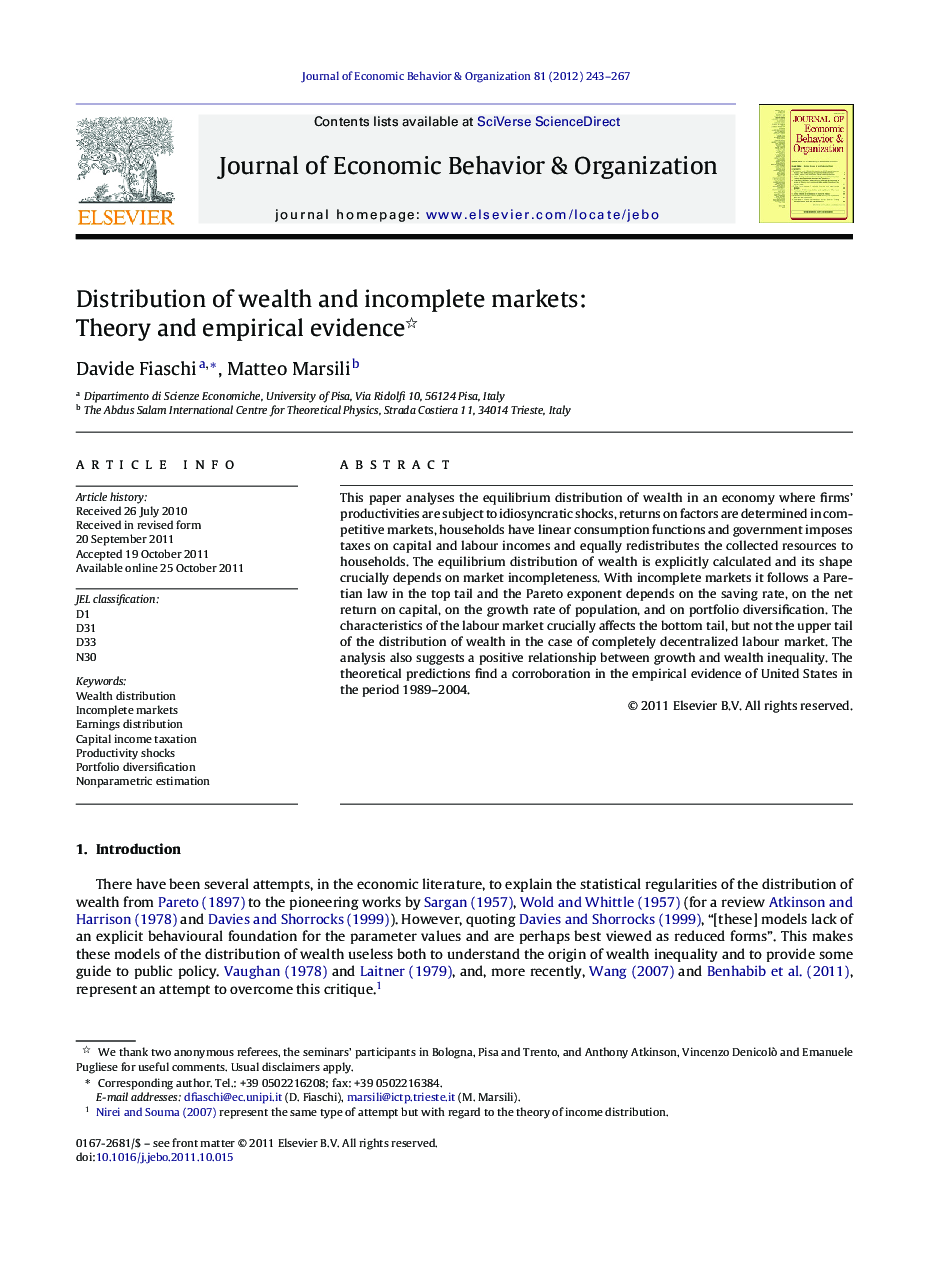| Article ID | Journal | Published Year | Pages | File Type |
|---|---|---|---|---|
| 883817 | Journal of Economic Behavior & Organization | 2012 | 25 Pages |
This paper analyses the equilibrium distribution of wealth in an economy where firms’ productivities are subject to idiosyncratic shocks, returns on factors are determined in competitive markets, households have linear consumption functions and government imposes taxes on capital and labour incomes and equally redistributes the collected resources to households. The equilibrium distribution of wealth is explicitly calculated and its shape crucially depends on market incompleteness. With incomplete markets it follows a Paretian law in the top tail and the Pareto exponent depends on the saving rate, on the net return on capital, on the growth rate of population, and on portfolio diversification. The characteristics of the labour market crucially affects the bottom tail, but not the upper tail of the distribution of wealth in the case of completely decentralized labour market. The analysis also suggests a positive relationship between growth and wealth inequality. The theoretical predictions find a corroboration in the empirical evidence of United States in the period 1989–2004.
► This paper analyses the equilibrium distribution of wealth in an economy where firms’ productivities are subject to idiosyncratic shocks. ► With incomplete markets equilibrium distribution of wealth follows a Paretian law in the top tail. ► The characteristics of the labour market crucially affects the bottom tail of the distribution of wealth. ► The analysis also suggests a positive relationship between growth and wealth inequality. ► The theoretical predictions find a corroboration in the empirical evidence of United States in the period 1989–2004.
